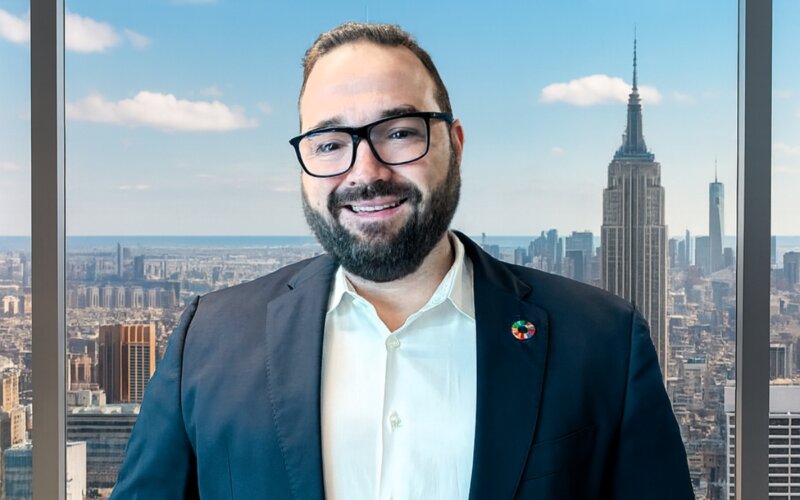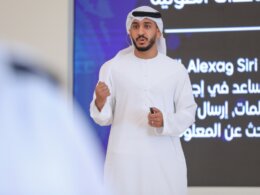There’s a paradox at the heart of global business that most executives don’t want to admit: the bigger your vision gets, the smaller your actual influence becomes. Unless, that is, you figure out how to make distance disappear. Enzo Carpanetti has spent decades wrestling with this exact problem, leading infrastructure megaprojects across continents where a decision made in one timezone has to matter, really matter, to someone working three time zones away.
“Strategy without context is just abstraction,” he tells me, and you can hear the weight of experience behind those words. Carpanetti isn’t theorizing from a corner office. He’s been the guy translating boardroom ambitions into construction sites, turning PowerPoints into actual infrastructure that people depend on. What makes him unusual isn’t just his track record of turnarounds and transformations—it’s his belief that the best moment to reinvent an organization isn’t when everything’s falling apart. It’s when things look perfectly stable.
That counterintuitive thinking has become his signature. While other executives wait for market disruption or competitive pressure to force change, Enzo Carpanetti is already reshaping operations when his teams still have the confidence and bandwidth to do it right. “Stability is often deceptive,” he explains, and suddenly his approach makes sense. Why wait for the fire when you can prevent it?
You’ve led teams across wildly different regions and cultures. How do you make global strategy actually work locally?
Here’s the thing… strategy without context is just abstraction. I’ve worked in regions where the same blueprint would completely fail unless you adapted it to cultural nuances and local regulations. My job is being that bridge between global vision and what actually works on the ground. That means listening deeply and empowering regional leadership. You can’t just translate; you have to make transformation speak the local language.
Most leaders react to disruption. You seem to anticipate it. Why move when everything seems fine?
Because that’s when you actually have the trust and clarity to challenge assumptions. When organizations are confident but not complacent, that’s your window. If you wait for urgency to hit, you’ve already lost momentum. Reinvention isn’t defensive, it’s a discipline.
How do you keep operations running smoothly while everything’s changing?
You anchor transformation in operational discipline. I’ve watched brilliant strategies fall apart because nobody protected the execution. You need resilience built into the system. Clear governance, empowered teams, and feedback loops that catch problems early. Change doesn’t succeed by bypassing operations; it succeeds by reinforcing them.
What separates great leaders from good ones today?
Jack Welch said good leaders “make a religion out of being accessible.” That’s not just a quote, it’s a practice. Today’s leaders need to be translators, catalysts, and stewards. You distill ambiguity into direction, empower execution without micromanaging, and stay radically open to being challenged. It’s about coherence and momentum, not control.
You talk about narrative control. What does that mean practically?
If you don’t define the story, you’re operating inside someone else’s frame. Whether it’s infrastructure, digitalization, or culture change, transformation has to be authored, not inherited. You’re not just shaping outcomes, you’re shaping understanding.
What’s your take on AI and digitalization’s ethical dimensions?
Technology must serve human dignity, not just efficiency. As Google’s CEO mentioned, the future of AI isn’t just technical, it’s societal. We’re building smarter systems, but we need wiser cultures to guide them.
What stays with me after our conversation isn’t Enzo Carpanetti’s impressive resume or his turnaround stories. It’s his insistence that leadership means “helping others shine brighter than me.” That’s not humility for show, it’s strategy. He understands something fundamental about scale: you can’t be everywhere, but your principles can be. You can’t make every decision, but you can empower people who will.
The distance between a global vision and local execution isn’t measured in miles or time zones. It’s measured in trust, translation, and the willingness to let regional teams own their reality while still moving toward a shared horizon. Enzo Carpanetti has built his career in that gap, turning what could be a chasm into a bridge. Maybe that’s why his teams follow him across continents and through transformations. They know he’s not just drawing maps from headquarters. He’s been where they are, and he’s clearing the path ahead.
For more on Enzo Carpanetti’s work and insights, check out his LinkedIn and website.












